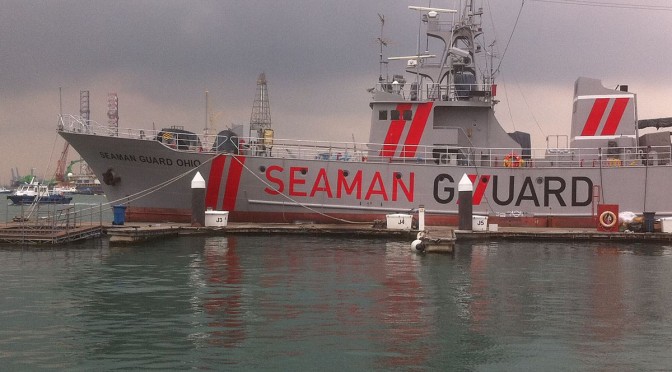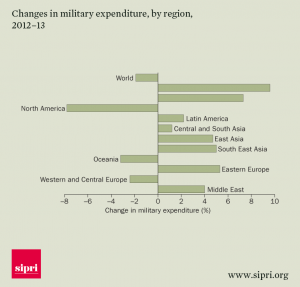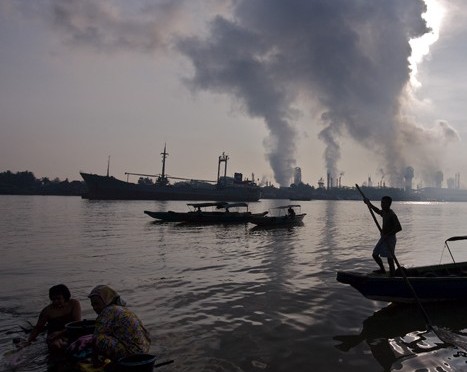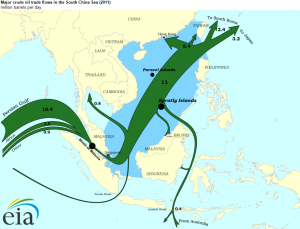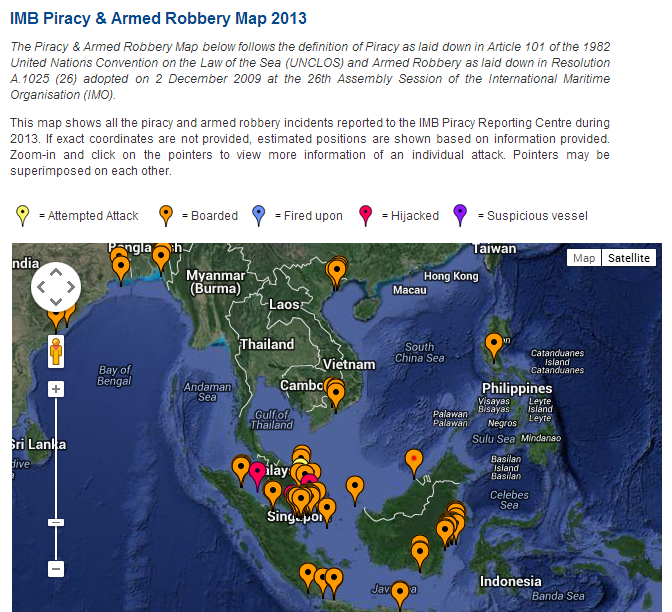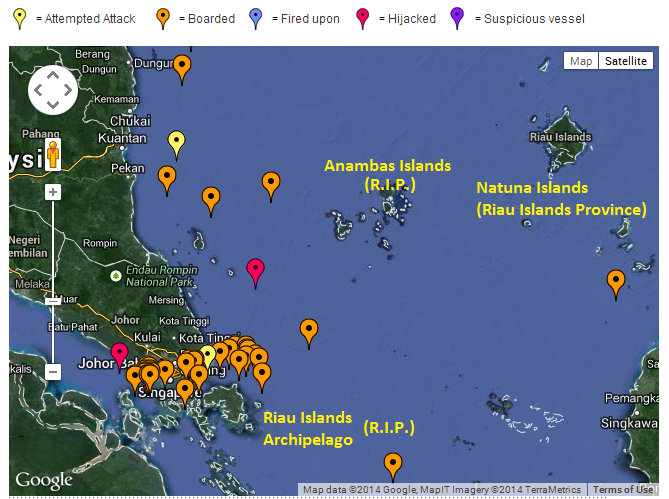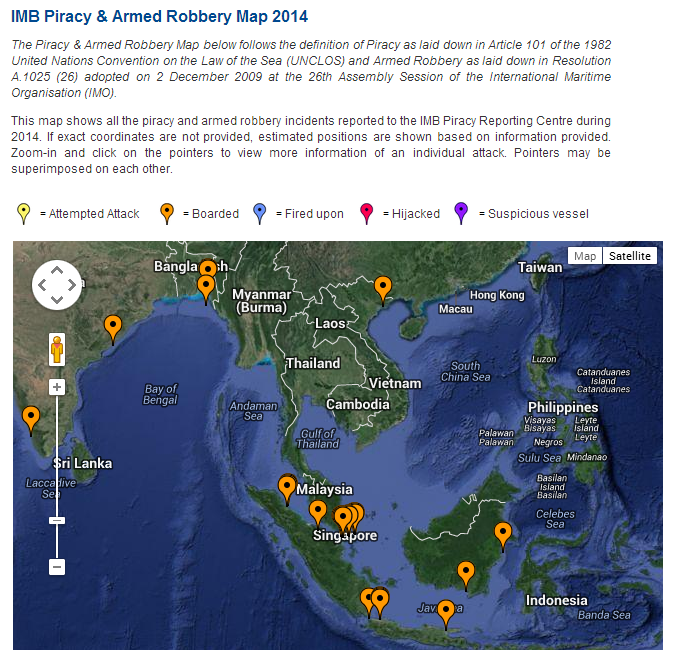This feature is special to our Private Military Contractor (PMC)s Week – a look at PMCs’ utility and future, especially in the maritime domain.
In the first part of this article we briefly explored the long history of private maritime security companies (PMSCs) in South and Southeast Asia, as well as the conditions most conducive to their sustainment and growth. In part two we look at regional factors that have or could lessen the threats to which PMSCs provide services in response – including government action, capacity building, and legal regimes – and will conclude with final thoughts on the outlook for PMSCs in the region.
Lessening the Prospects for PMSCs
Perhaps the largest mitigating factor for PMSCs’ prospects is the whether governments will themselves tackle the underlying issues, including economic development, instability, and corruption, and/or their outgrowths that PMSCs attempt to address, such as piracy and maritime crime. This factor consists of and can be measured by both the desire and ability of governments to take on these challenges.
As discussed in part one, levels of piracy and armed robbery (PAR) and kidnapping and ransom (K&R) against ships have been two of the main determinants of the market for PMSCs in the region and the frequency, severity, and locations of these attacks have varied over the recent decades. This dynamic owes in part to several measures undertaken by regional governments beyond those development efforts aimed at removing the economic basis for crimes. What follows is not intended as an exhaustive catalogue, but an attempt to highlight some of the most illustrative examples.
Demonstrating Desire
In coming to terms in the post-Tsunami peace agreement, Indonesia’s government and its Aceh foes removed a major source of instability that opportunistic actors from both sides of the conflict reportedly used for kidnapping and ransom operations at the mouth of the Malacca Strait. Whether attackers’ motives were to provide a revenue stream to further the insurgency, or as a manifestation of corruption, the removal of the combatants – along with the tsunami’s decimation of the local population and maritime assets used in attacks – helps explain the documented drop in numbers by the International Maritime Bureau (IMB).1819
Alternately, governments can take direct action against criminals based in their territory as well as demonstrate their willingness to crack down on internal corruption feeding such crime. PMSC expert James Bridger remarks that the Chinese government launched a campaign in the 1990s against “criminal syndicates and ‘rogue’ police and coast guard units that had been engaging in hijackings and phantom ship fraud out of Hong Kong and southern China.” While there are dangers in relying on self-reporting, an area once known as a favorite destination of hijacked vessels re-named for resale,20 Hong Kong, is now known far more for piracy of a digital kind.21
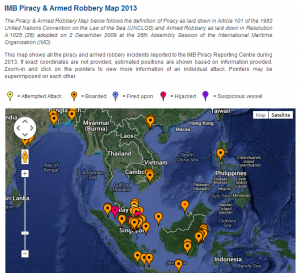
Governments can also work together, and with non-governmental organizations such as the IMB, in the fight against maritime crime. These efforts can be particularly important in preventing criminals from exploiting the seams between territorial waters and exclusive economic zones (EEZs). In 2004 Malaysia, Singapore, and Indonesia initiated an agreement known as the Trilateral Coordinated Patrol, or MALSINDO, nominally providing smarter coverage by coordinating patrol areas. Illustrating the importance of closing the maritime seams, the agreement was criticized for failing to provide cross-border pursuit permissions due to sovereignty sensitivities.22 As Lino Miani notes in The Sulu Arms Market, “territorial disputes and historical mistrust…undergirds the hesitation to enter into multilateral agreements.”23
In 2005 the three nations of the MALSINDO agreement were joined by Thailand in an attempt to bolster the initiative’s effectiveness by dedicating air assets for maritime air patrol missions with hosted liaison officers in what is known as the Eyes in the Sky (EiS) plan.24 In addition to the capability boost, EiS also marked the first time the nations allowed each other to briefly cross a short ways into their territorial airspace while executing the coordinated mission.25 In 2006 the participating countries combined the two efforts in the new Malacca Straits Patrol Network.26
Another recent example of inter-governmental cooperation helping close maritime seams is the Regional Cooperation Agreement on Combating Piracy and Armed Robbery against Ships in Asia (ReCAAP). The initiative, which entered into force in 2006, establishes information-sharing and attack reporting procedures among 19 countries and an Information Sharing Centre (ISC).27
Yet Malaysia and Indonesia are notably absent from ReCAAP. In another move seen as indicative of the nations’ territorial sensitivities the pair passed on the U.S.-proposed Regional Maritime Security Initiative in 2004, which would have involved Americans in joint patrols including “special forces on high-speed boats.”28 A key difference between these efforts and the Malacca Straits Patrol Network is the involvement of nations external to Southeast Asia. While it doesn’t include Malaysia or Indonesia, ReCAAP involves nations such as Japan, China, Denmark, and the United Kingdom.
Singapore stands in contrast with the two former nations in its openness to long-term partnerships involving a foreign presence. In addition to hosting the ReCAAP’s ISC, it has invited the United States to rotate through a squadron of forward-deployed littoral combat ships, temporarily stationing them at Changi Naval Base, along with the maintenance facility the United States has long maintained in the port.29 An important indicator of the outlook for PMSCs in the coming years will therefore be the receptiveness of these straits nations to maintain or pursue regional approaches to combating maritime crime – as well as their tolerance for joint patrols or a foreign presence.30
Investing in Capacity
Whatever the merits of these regional initiatives in concept, they and individual nations’ efforts require assets to be effective. These assets in turn require investments in procurement, training, and maintenance.31 It’s what separates ReCAAP’s ISC from ASEAN’s Center for Combating Transnational Crime – first proposed in 1997 and stuck on the drawing board ever since.32 Even with the EiS add-on, MALSINDO has been criticized as a public-relations salve lacking the resources to provide comprehensive coverage and hindered by corruption.33
Tracking defense expenditures therefore serves as a similar measure of governments’ seriousness in tackling PAR. While the specifics vary, South and Southeast Asian nations have a large appetite and long-term plans for expanding their coast guards and naval forces – with submarines, patrol craft, and naval aircraft high-priority items.34 Yet the ability to field these maritime forces, and do so effectively, is constrained by limited, though rising, budgets.35 Many of these investments are aimed at protective capabilities in the event of inter-state conflict against the backdrop of China’s own spending increases, but several can also boost maritime enforcement efforts. Key nations including India, Indonesia, Malaysia, Singapore, Vietnam, Thailand, Bangladesh, and the Philippines are pursuing corvette or frigate programs, as well as various fast attack and patrol boat procurement.
Indonesia bears closer scrutiny as it faces perhaps the largest PAR threat and is expected to double defense expenditures from 2013 to 2018, after increases of 34 percent in 2011, 16 percent in 2012, and 7 percent in 2013.36 In addition to frigates, the country is also building three classes of fast attack craft that can aid maritime enforcement efforts.37 Further, Indonesia’s military (TNI) announced in March that it would increase its presence around Natuna Island, a former mainstay of piracy to the east of the current hotspots near the Riau Archipelago. While this move is publicly aimed at preventing “infiltration” and “instability” in the South China Sea – primarily to safeguard nearby oil and gas fields – the additional air force and naval assets could act in a secondary capacity to deter PAR to the west when not otherwise engaged.38
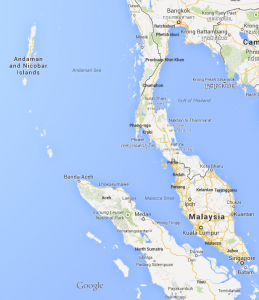 Meanwhile at the western approaches to Malacca Strait, India’s Andaman and Nicobar Islands could act as the first line of defense against a return to epidemic maritime crime in the strait. India’s Andaman and Nicobar Command (ANC) is charged with “maritime surveillance, humanitarian assistance and disaster relief, as well as suppressing gun running, narcotics smuggling, piracy, and poaching in India’s EEZ.” Since establishing the ANC in 2001, the India has continued to develop the command’s capacities, albeit at a slow pace, commissioning a new naval air station in 2012 and a new offshore patrol vessel in 2013.39
Meanwhile at the western approaches to Malacca Strait, India’s Andaman and Nicobar Islands could act as the first line of defense against a return to epidemic maritime crime in the strait. India’s Andaman and Nicobar Command (ANC) is charged with “maritime surveillance, humanitarian assistance and disaster relief, as well as suppressing gun running, narcotics smuggling, piracy, and poaching in India’s EEZ.” Since establishing the ANC in 2001, the India has continued to develop the command’s capacities, albeit at a slow pace, commissioning a new naval air station in 2012 and a new offshore patrol vessel in 2013.39
Yet in the short run, foreign partners or PMSCs may be the easiest capacity-bolstering ways for states to preserve the gains against maritime crime or reduce it further. Help from the former is forthcoming from several corners, potentially limiting the need to turn to PMSCs. India agreed to build four Offshore Patrol Vehicles (OPVs) for Myanmar’s navy, along with a “$100-million credit line to Vietnam to purchase” four patrol boats.40 The United States has recently sold former U.S. Coast Guard cutters to Bangladesh and the Philippines on favorable terms. Japan is likewise “donating” 10 patrol boats to the Philippines, reportedly by extending a $110-million line of credit,41 and Vietnam has asked to procure them as well.42 While there has been no public confirmation of a deal between Japan and Vietnam, including during last month’s bilateral agreement on enhanced maritime security ties, it’s possible that this will be announced during President Obama visit this week to Asia. On Friday the Yomiuri Shimbun cited sources stating that Japan and the U.S. will on Thursday announce moves to jointly help ASEAN countries “strengthen their maritime surveillance capabilities,” “counter piracy,” and “help member states better respond to natural disasters such as typhoons and earthquakes.”43
A final way for governments to boost their capacity directly mimics PMSCs’ at-sea protection services through what are known as vessel protection detachments (VPDs). These detachments are typically comprised of active duty service members of a nation’s military and hired out to individual shipping companies for protective duties in high risk transit areas or aboard World Food Program vessels.44 While VPDs have faced criticism on legal and efficacy grounds – for blurring the lines between sovereign services and mercenaries and for narrowing protection to individual ships – the list of countries offering VPDs has grown markedly in the past five years, albeit primarily for use along the East African coast.45
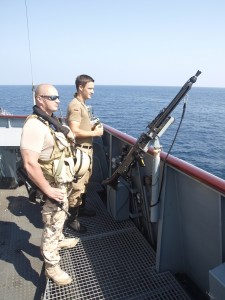
The effect of this competition on PMSCs is debatable. On one hand some shipping companies have “voiced a strong preference for VPDs” over PMSCs due to their perceived legal protections and ease of moving weapons.46 As will be discussed below, however, these legal protections have been challenged. Further, according to a 2013 study, only 35% of Dutch ships traversing high risk areas off Somalia applied for a VPD due to the “high costs, lack of flexibility of deployment, and long application schedule.”47 (Figures for Southeast Asia were not available but the business case rationale is likely analogous when available) While those Dutch companies who looked to PMSCs as an alternative did so illegally due the nation’s laws, it’s clear that VPDs will remain attractive to some who would otherwise higher PMSCs.
Legal and Policy Issues
Governments’ legal regimes and policies serve as additional factors directly impacting the prospects of PMSCs in the region on several fronts. When operating in territorial waters, the U.N. Convention on the Law of the Sea (UNCLOS) provides little clarity on the legal status or protections for PMSCs performing embarked duties or vessel-protection escorts. The innocent passage regime protects the rights of states in territorial waters, including their transiting warships, but sees armed non-state escort vessels, or private armed on-board detachments as violating the “standard practices” of the international community. No definitive case law has put the matter to rest and the increasing acceptance of armed guards on ships combating Somali-based piracy could lead to a change of acceptance elsewhere, but for the time being the waters remain murky.48
In setting national policies, Indonesia and Malaysia both publicly prohibit the use of armed shipboard PMSC detachments, with Singapore the exception – provided stringent weapons control requirements are followed.49 Carolin Liss notes, however, that despite these pronouncements PMSCs are routinely able to obtain back-channel notifications and permissions, smoothed over with “fees.”50
The varying home laws of the shipping companies also impact the environment for PMSCs in South and Southeast Asia. As mentioned, some states such as the Netherlands currently prohibit PMSCs aboard their vessels. Nonetheless, the trend is clearly towards operating states allowing their use in a regulated process as the Netherlands is the sole E.U. nation without such legislation in place, and a Dutch law that would permit PMSC use in 2015 is in the process of approval.51
Whether PMSC or VPD, Italy’s experience in the Enrica Lexie case is illustrative of the legal dangers in the region facing embarked detachments. In February 2012, two Italian Marines – part of a VPD – shot and killed a pair of Indian fishermen they believed to be pirates. The case has tested the belief that sovereign actors provide greater legal protection for counter-piracy teams in international waters and is still working its way through India’s legal system with a trial date scheduled for July.52
Regional weapons control laws also complicate the logistics of both VPDs and PMSCs. Kevin Doherty, President of Nexus Consulting, a PMSC that operates in Southeast Asia, states that in contrast with ports servicing embarked teams in the western Indian Ocean, “many Asian ports don’t allow weapons to be ‘introduced,’ and must therefore be loaded well in advance.” One outcome is the creation of so-called floating armories in international waters, which come with their own set of complications and regional baggage.
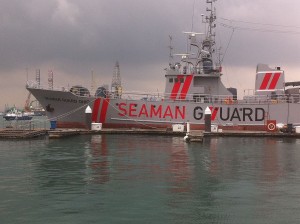 India in particular has expressed concern for these armories. Then-Indian Navy Chief of Staff DK Joshi argued at the 2013 Galle Dialogue they could fall prey to pirates and that they and PMSCs’ lack of international regulation made them susceptible to supporting criminals, traffickers, and terrorists.53 Another on-going case illustrates the complexities and difficulties for PMSCs. After the Sierra Leone-flagged vessel Seaman Guard Ohio entered Indian waters in October 2013 it was escorted to port by an Indian Coast Guard vessel.54 While the Indian government has labelled the vessel operated by U.S.-based PMSC AdvanFort, a floating armory, the company’s spokesman denies the categorization saying the ship serves as an escort vessel that was unable to dispose of its weapons prior to entering port due to the sudden nature of the detainment by the Indian Coast Guard.55
India in particular has expressed concern for these armories. Then-Indian Navy Chief of Staff DK Joshi argued at the 2013 Galle Dialogue they could fall prey to pirates and that they and PMSCs’ lack of international regulation made them susceptible to supporting criminals, traffickers, and terrorists.53 Another on-going case illustrates the complexities and difficulties for PMSCs. After the Sierra Leone-flagged vessel Seaman Guard Ohio entered Indian waters in October 2013 it was escorted to port by an Indian Coast Guard vessel.54 While the Indian government has labelled the vessel operated by U.S.-based PMSC AdvanFort, a floating armory, the company’s spokesman denies the categorization saying the ship serves as an escort vessel that was unable to dispose of its weapons prior to entering port due to the sudden nature of the detainment by the Indian Coast Guard.55
During the same Galle speech, Joshi commended neighboring Sri Lanka for providing what he viewed as a model regulatory regime of both PMSCs and the nation’s government-supported armories. PMSCs can receive licenses from the Sri Lankan Ministry of Defense to store equipment and weapons on naval bases or on floating armories run in partnership with the government – although these primarily service western Indian Ocean transits.56 Center for Naval Analyses’ Nilanthi Samarankaye says that this stringent effort to control armories through regulation is due in part to the “still fresh” memory of their use by the Liberation Tigers of Tamil Eelam (LTTE) during the Sri Lankan civil war, giving context to the regional fears that unregulated PMSCs and their support networks could have destabilizing side-effects.
Marine Resource Protection
A final area of possible mitigation for PMSCs’ prospects is in the realm of marine resource protection. As The Diplomat’s Zachary Keck notes, PMSCs “have sometimes been used by states to combat illegal fishing in their EEZs. Tensions over fishing rights in Southeast Asian waters have been high and are likely to persist so long as states continue to dispute their maritime borders in places like the South China Sea.”
Yet PMSCs are not alone in seeking to find solutions to these problems. Maritime activism expert Cdr. Chris Rawley, U.S. Navy, points out that “today, pirates, environmental activists, and more legitimate private security contractors compete for some of the same business, especially in the realm of marine wildlife protection.” For example, “Illegal shark finning remains a problem mostly driven by Asian markets that NGOs have expressed an interest in combating.”
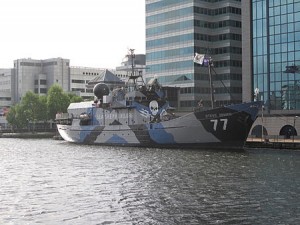
It’s a fascinating trilateral confluence of interests which, instead of seeing states hiring PMSCs, could see NGOs outsourcing to PMSCs to achieve their aims, or alternately NGOs becoming more like PMSCs by “selling” their services to nations. In one possible scenario, in exchange for the enforcement of a nation’s territorial claims, an NGO might extract concessions on marine wildlife preservation. As documented by Rawley, some of have already moved towards PMSCs in tactics and capacity if not in business models or motivation.57 Says Keck, “Already, we have seen the Philippines use nominally civilian vessels to resupply their marines on the Second Thomas Shoal in the face of China’s blockade. Thus, there seems to be demand for more innovative solutions to the region’s growing maritime disputes.”
In providing training maritime law enforcement (MLE) to national agencies PMSCs might also run into difficulty. Heather Bacon-Shone, a U.S. Coast Guard officer with experience conducting MLE training in Southeast Asia says PMSCs would have trouble finding an adequate profit and could lack credibility if they don’t hire personnel specific to the mission. “MLE training is as much if not more about laws, legal process, case packages, and reasonable suspicion than it is about kicks, punches, and stuns,” said Bacon-Shone. “What we are really trying to teach them is about the rule of law, not about how to take each other down. It’s a real eye-opener for some that we accomplish so much compliance without having to beat people up.”
Assessing the Outlook
On the balance, the opportunities for PMSCs in South and Southeast Asia appear constrained. “The need for PMSCs is limited,” says Doherty. “The ‘high risk’ zones are only a day or two of transit, not like the 7-10 days in the [western] Indian Ocean or like a week at anchorage in West Africa.” Meanwhile geography might also help prevent a resurgence of piracy in the Strait of Malacca. As Bacon-Shone points out it’s “quite narrow and limited of a space, unlike the Gulf of Aden, which is much harder to patrol and control.” Additionally, “the prospects for PMCs in Southeast Asia may be dimming, remarks Keck, “as tensions over the South China Sea push Southeast Asian nations to develop stronger navies and coast guards, which should reduce demand from commercial entities for private security.”
Nonetheless, PMSCs will not disappear from the scene. Outside the universal need for port security, especially prevalent in the region, there are opportunities in high-value transit protection, training of VPDs and security forces, investigation services, and marine resource protection. And, as we discussed above, Keck says “it’s possible that some of the weaker maritime Southeast Asian nations could hire PMSCs to help patrol the waters they claim. This could be seen as a cheaper or at least quicker, temporary solution to their maritime woes, compared with building up their own naval and coast guard fleets.”
Furthermore, one should never discount the ability of organized crime syndicates to adjust and find new vulnerabilities to exploit. As von Hoesslin stresses, criminal organizations remain “dynamically fluid and capable of adjusting quickly to enforcement pressures.”58 Counter-terrorism too could return as a greater priority and create an opening for PMSCs. “There are a lot of really bad guys reportedly getting out of jail this year in Indonesia,” remarks Doherty, “and the line between piracy and terrorism is not going to be as clear.”
In the “Asian Century,” PMSCs will continue to play a role when threats outpace state capacity. The breadth of that role has yet to be defined.
LT Scott Cheney-Peters is a surface warfare officer in the U.S. Navy Reserve and the former editor of Surface Warfare magazine. He is the founder and vice president of the Center for International Maritime Security (CIMSEC), a graduate of Georgetown University and the U.S. Naval War College, and a member of the Truman National Security Project’s Defense Council.
————-
18. Catherine Zara Raymond, “Piracy and Armed Robbery in the Malacca Strait: A Problem Solved?” Naval War College Review, (Summer 2009): Vol. 62, No. 3, 37: http://www.usnwc.edu/getattachment/7835607e-388c-4e70-baf1-b00e9fb443f1/Piracy-and-Armed-Robbery-in-the-Malacca-Strait–A-
19. Kate McGeown, “Aceh Rebels Blamed for Piracy,” BBC News Online, September 8, 2003: http://news.bbc.co.uk/2/hi/asia-pacific/3090136.stm
20. Abby Tan, “In Asian Waters, Sea Pirates Eschew Eye Patches, Steal Ships via Internet,” Christian Science Monitor, 13 June, 1996, http://www.csmonitor.com/1996/0613/061396.intl.intl.4.html/(page)/2
21. Interestingly it should be noted that several sources contacted for this article mentioned rumors of continued criminal syndicates operating out of Chinese , which if true, shows the danger in relying only on reported statistics.
22. Raymond, 36.
23. Lino Miani, The Sulu Arms Market (Institute of Southeast Asian Studies: Singapore, 2011): 122.
24. Zou Keyuan and Shicun Wu Maritime Security in the South China Sea (Ashgate: 2013): 61.
25. Raymond, 37. Admiral Bernard Sondakh, Indonesian Navy Chief of Staff, emphasized the patrols are “coordinated” vice “joint” as there is no singular command structure. Keyuan and Wu, 62.
26. Rajeev Sawhney, “Redefining the Limits of the Straits: A Composite Malacca Straits Security System,” IDSS Commentaries, 18 May, 2006: http://www.rsis.edu.sg/publications/Perspective/IDSS0372006.pdf
27. “About ReCAAP” (accessed 17 April, 2014): http://www.recaap.org/AboutReCAAPISC.aspx
28. Bill Tarrant, “Balancing Powers in the Malacca Strait,” Reuters Global News Journal, March 7, 2010: http://blogs.reuters.com/global/2010/03/07/balancing-powers-in-the-malacca-strait/
29. Christopher P. Cavas, “Next LCS Decployment to Last 16 Months,” Defense News, January 6, 2014: http://www.defensenews.com/article/20140106/DEFREG02/301060023/Next-LCS-Deployment-Last-16-Months
30. There is additionally a multitude of short-duration bilateral and multilateral exercises and coordinated patrols with counter-piracy or maritime enforcement components, including India’s Indo-Thai Joint Patrols and biannual Indo-Ind Corpat and the Southeast Asia Cooperation and Training (SEACAT) exercise hosted at Singapore’s Multinational Operations and Exercise Center at Changi Naval Base.
31. Miani, 126.
32. Fund for Peace, Transnational Security Threats in the Straits of Malacca, 17: http://library.fundforpeace.org/library/ttcvr1213-threatconvergence-malaccastraits-08e.pdf
33. Liss, 295.
34. For a recent survey of procurement programs in the region see Wendell Minnick, “Tighter Budgets Limit Southeast Asian Plans,” Defense News, 13 April, 2014. http://www.defensenews.com/article/20140413/DEFREG03/304130015/Tighter-Budgets-Limit-Southeast-Asian-Plans
35. For analysis of defense budgets in the region see “Military Spending Continues to Fall in the West but Rises Everywhere Else,” SIPRI, April 14, 2014: http://www.sipri.org/media/pressreleases/2014/Milex_April_2014; Global Defense Budgets Overall to Rise for First Time in Five Years,” IHS Pressroom, February 4, 2014: http://press.ihs.com/press-release/aerospace-defense-terrorism/global-defence-budgets-overall-rise-first-time-five-years; “Southeast Asia: The Next Growth Opportunity in Defense,” McKinsey and Company, February 2014.
36. “Forecast International Expects Defense Spending to Project Upward Across Asia-Pacific Region,” Forecast International, October 31, 2013: http://globenewswire.com/news-release/2013/10/31/585516/10055526/en/Forecast-International-Expects-Defense-Spending-to-Project-Upward-Across-Asia-Pacific-Region.html
37. Minnick, “Tighter Budgets Limit Southeast Asian Plans.”
38. Scott Cheney-Peters, “Indonesia’s Skin in the Game,” CIMSEC’s NextWar, Mar 19, 2014: https://cimsec.org/indonesias-skin-game/
39. Jeff M. Smith, “Andaman and Nicobar Islands: India’s Strategic Outpost,” The Diplomat, March 18, 2014: http://thediplomat.com/2014/03/andaman-and-nicobar-islands-indias-strategic-outpost/
40. Nitin A. Gokhale, “India’s Growing Military Diplomacy,” The Diplomat, August 16, 2013: http://thediplomat.com/2013/08/indias-growing-military-diplomacy/
41. “Philippines Asks Japan for $110M Loan for 10 Patrol Vessels,” manilastandardtoday.com, February 12, 2014: http://newsonjapan.com/html/newsdesk/article/100931.php
42. “Japan Coast Guard Vessels and Equipment in High Demand in S.E. Asia, Africa,” The Asahi Shimbun, September 30, 2013: http://ajw.asahi.com/article/asia/around_asia/AJ201309300001
43. “Japan, US to help ASEAN monitor Seas,” The Japan News, April 20, 2014:
http://the-japan-news.com/news/article/0001221995
44. James Brown, “Pirates and Privateers: Managing the Indian Ocean’s Private Security Boom,” Lowy Institute, 12 September, 2012: http://www.lowyinstitute.org/publications/pirates-and-privateers-managing-indian-oceans-private-security-boom
45. However several of these limit their use solely to World Food Program vessels, and many to own-nation flagged or controlled shipping lines. Ibid.
46. Ibid.
47. Bibi van Ginkel, Frans-Paul van der Putten, and Willem Molenaar, “State or Private Protection Against Maritime Piracy?” Netherlands Institute of International Relations Clingendael (February 2013), 10: http://www.clingendael.nl/sites/default/files/20130200_state_or_private_protection_web.pdf
48. Gerard Ong Graham “A Case for Armed Guards on Ships,” World Security Network, June 01, 2005: http://www.worldsecuritynetwork.com/Other/Gerard-Ong-Graham/A-case-for-armed-guards-on-ships. As an indication of changed attitudes towards armed guards on vessels, see the International Maritime Organization’s interim circulars: http://www.imo.org/OurWork/Security/PiracyArmedRobbery/Pages/Private-Armed-Security.aspx
49. Fund for Peace, Transnational Security Threats in the Straits of Malacca, 15
http://library.fundforpeace.org/library/ttcvr1213-threatconvergence-malaccastraits-08e.pdf
50. Liss, 336-338
51. “ESS&SA Pioneering Maritime Security Industry,” Maritime Executive, February 26, 2014: http://www.maritime-executive.com/article/ESSSA-Pioneering-Maritime-Security-Industry-2014-02-26/
52. “Italian Marines Case: Court to Hear Case on July 31,” The Times of India, March 31, 2014: http://timesofindia.indiatimes.com/india/Italian-marines-case-Court-to-hear-case-on-July-31/articleshow/33023539.cms. That the actions took place in international waters is a matter of contention, and the Italians’ legal team contends the shots fired were warning shots.
53. PK Balachandran, “Regulate Private Maritime Security Firms: SL Navy Chief,” The New Indian Express, November 26, 2013: http://www.newindianexpress.com/world/Regulate-private-maritime-security-firms-SL-Navy-Chief/2013/11/26/article1910994.ece
54. S. Vijay Kumar and Praveen Paul Joseph, “Ship with Armed Guards Detained in Indian Waters,” The Hindu, October 19, 2013, http://www.thehindu.com/news/national/tamil-nadu/ship-with-armed-guards-detained-in-indian-waters/article5229375.ece
55. Edward Lundquist, “M/V Seaman Guard Ohio Remains Detained in Indian Port,” Defense Media Network, October 21, 2013: http://www.defensemedianetwork.com/stories/mv-seaman-guard-ohio-remains-detained-in-indian-port/
56. Lowy and Oscar Rickett, “Piracy Fears over Ships Laden with Weapons in International Waters,” The Guardian, January 10, 2013: http://www.theguardian.com/world/2013/jan/10/pirate-weapons-floating-armouries
57. Chris Rawley, “The SOFification of Maritime Activism,” Information Dissemination, March 22, 2014: http://www.informationdissemination.net/2014/03/the-sofification-of-maritime-activism.html?utm_source=feedburner&utm_medium=feed&utm_campaign=Feed%3A+InformationDissemination+%28Information+Dissemination%29
58. von Hoesslin, 546.

